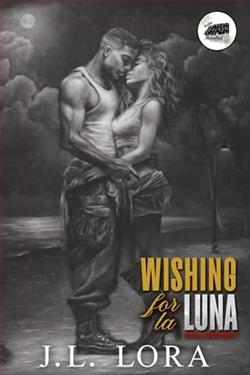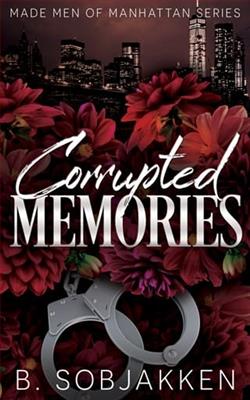Page 55 of Close
Kari did remember—a multiple homicide that had nearly broken her as a rookie detective.She’d worked herself to exhaustion, following leads that led nowhere, building theories that collapsed under scrutiny.She’d been ready to request a transfer when Maria had found her in the evidence room at 2 AM, surrounded by crime scene photos and witness statements.
“When you hit a wall,” Kari recited, “go back to the beginning.But take everything you know now with you.”
“Exactly.”Maria’s voice warmed with approval.“You’ve learned things since the first body dropped.New evidence, new context, new connections.So go back to the start, but with upgraded software.Sometimes the brain needs that reboot to see what’s been there all along.”
Kari glanced at her notes, spread across the passenger seat.“Worth a shot.”
“Always is.”A pause, then, more seriously: “You okay otherwise?It can’t be easy, being back with all those ghosts.”
The question carried layers of meaning.Maria knew about Anna’s death, about Kari’s complicated relationship with the reservation, about the ghosts—both literal and metaphorical—that had driven her to Phoenix in the first place.
“I’m managing,” Kari said, the automatic response feeling hollow even to her own ears.“It’s… complicated.”
“Life usually is.”Maria’s voice was interrupted by another, muffled in the background.“Gotta go.My partner’s back, and our target’s on the move.But Kari?Trust your instincts.They never steered you wrong in Phoenix.”
After hanging up, Kari sat for a moment, watching the moonlight cast strange shadows across the desert landscape.Then she pulled back onto the highway, Maria’s advice replaying in her mind.
Go back to the beginning.
Victim one: Mark Harrington.Geology professor, studying formations at sacred sites.Killed during the full moon near Monster’s Hand.Body positioned facing east, herbs arranged incorrectly, ceremonial elements showing academic knowledge but practical inexperience.
Victim two: Rachel Delgado.Environmental activist, documenting mining intrusions on tribal land.Killed near dawn, throat cut, body arranged with similar but still incorrect ceremonial elements.
Victim three: Alan Mitchell.Archaeologist with history of controversial excavations.Killed at dusk while attempting unauthorized dig.Ceremonial elements suddenly, dramatically improved in accuracy.
What had changed between victims two and three?
Kari’s hands tightened on the steering wheel as the realization hit her with the force of a physical blow.
She had.
She had changed the equation by visiting Dr.Elaine Redford and showing her the crime scene photos.By pointing out the specific errors in the ceremonial arrangements.By inadvertently giving the killer exactly the information needed to correct those mistakes.
The killer couldn’t be Livingston—timing made that impossible.Couldn’t be Thomas Begay, still in custody when Mitchell died.Couldn’t be Natoni, who had a solid alibi for the first murder and wouldn’t have made those ceremonial errors regardless.
But Dr.Elaine Redford fit perfectly.
Academic knowledge of ceremonies without practical experience?Check.
Connection to all three victims?Check.Harrington was her colleague; they’d worked together on research projects.Delgado’s ex-husband had covered the mining dispute that would have threatened archaeological sites Redford studied.Mitchell was another faculty member at Canyon State University, a rival in her own department.
Physical capability?Questionable for someone of her small stature, but not impossible with the element of surprise.
And most damningly—the sudden improvement in ceremonial accuracy after Kari’s visit, when she’d unwittingly shown Redford exactly what she was doing wrong.
Kari pressed the accelerator harder, the Jeep responding with a surge of speed.She needed to get back to the station to check Redford’s background more thoroughly and see if she had access to the Museum of Northern Arizona building where the ceremonial items had been stolen.
The highway blurred as her mind raced ahead, reconstructing the case with this new lens.Mitchell’s murder hadn’t represented an escalation in the killer’s timetable—it represented opportunity.Redford must have learned that Mitchell was planning an unauthorized excavation and seized the chance to eliminate him while creating another data point in her carefully constructed narrative.
But why?What connected these specific victims beyond their transgressions against tribal land and culture?What personal motivation would drive an anthropologist to orchestrate ritualistic murders while deliberately framing traditional Navajo practitioners?
Kari arrived at the station to find it humming with activity despite the late hour.The conference room had been transformed into an incident command center, with timeline boards, evidence logs, and suspect profiles covering the walls.Tsosie stood at one end, deep in conversation with Captain Yazzie, while Daniels directed his agents from the opposite side of the room, the division of territory as much psychological as physical.
Tsosie noticed her first, breaking away mid-sentence to intercept her.“You okay?How’s Ruth?”
“She’s fine,” Kari said, too focused on her revelation to elaborate.“I need to talk to you and Captain Yazzie.Now.Privately.”
Something in her tone must have communicated the urgency, because Tsosie didn’t ask questions, simply nodding and gesturing for Yazzie to join them.They moved to Yazzie’s office, closing the door on the bustling investigation room.















